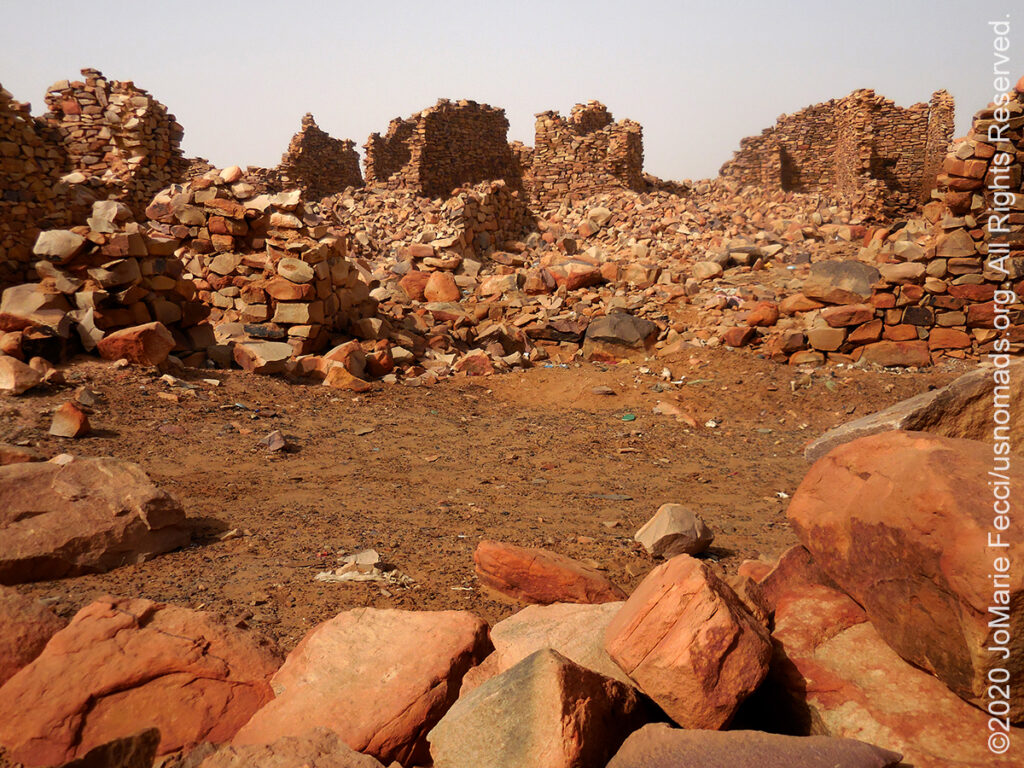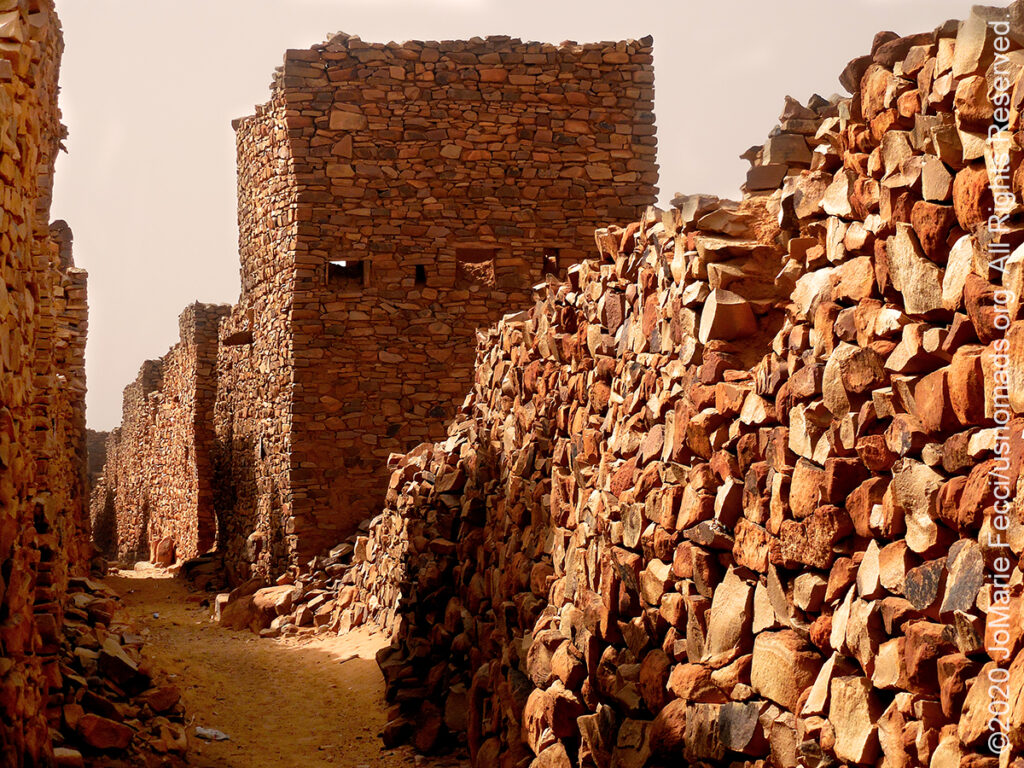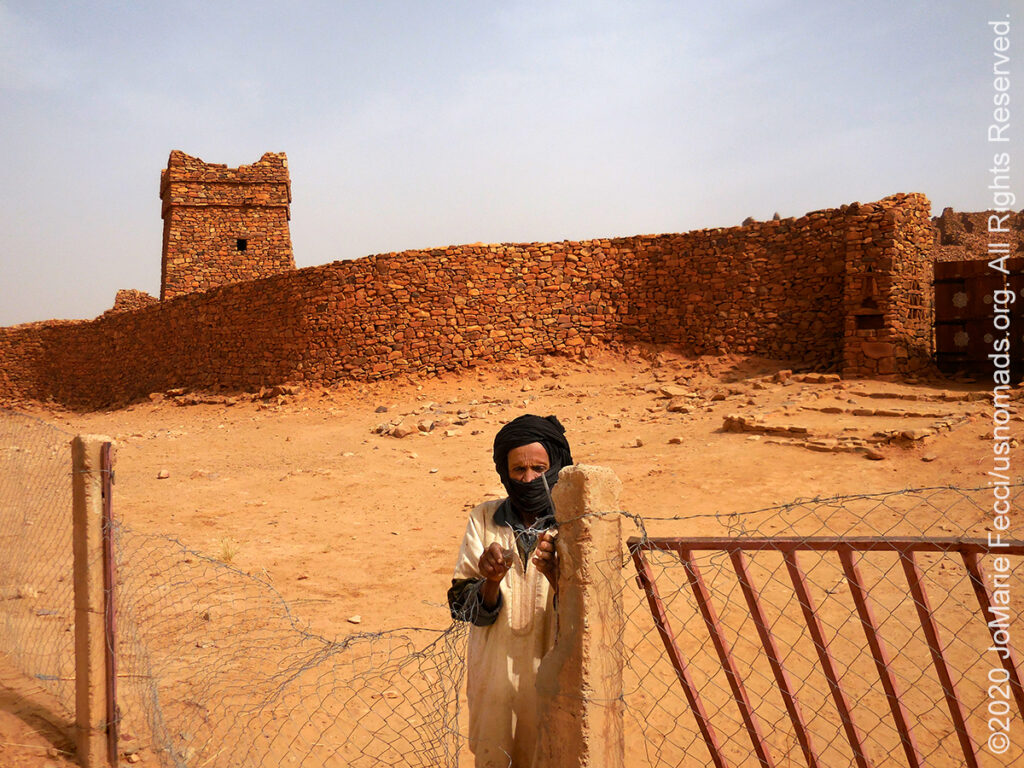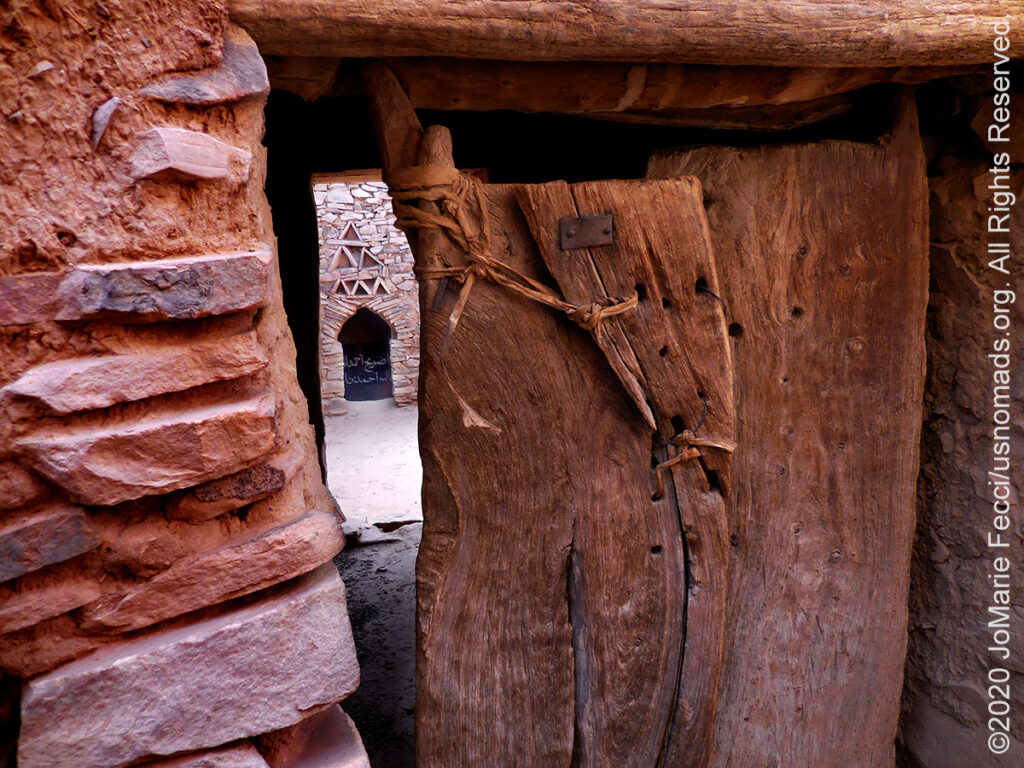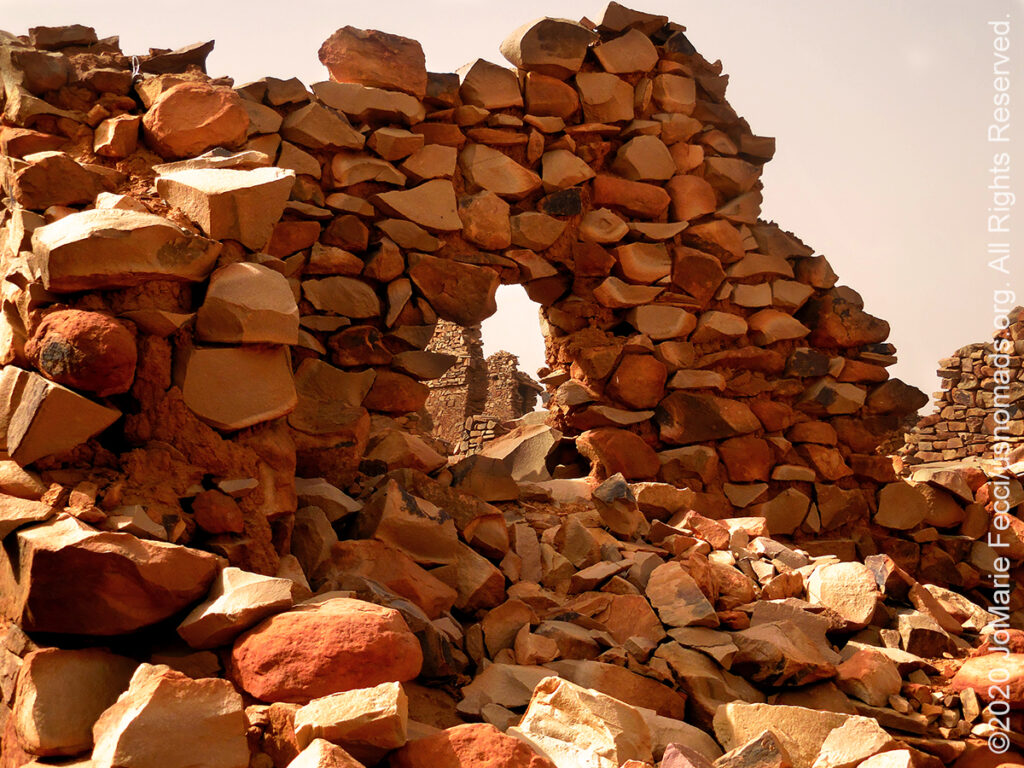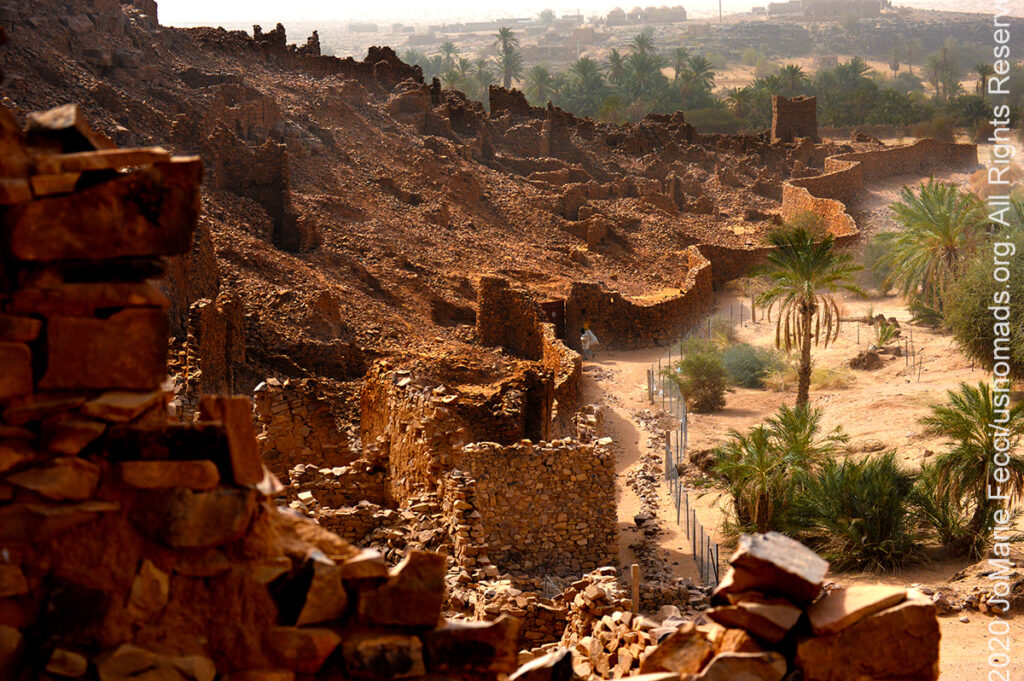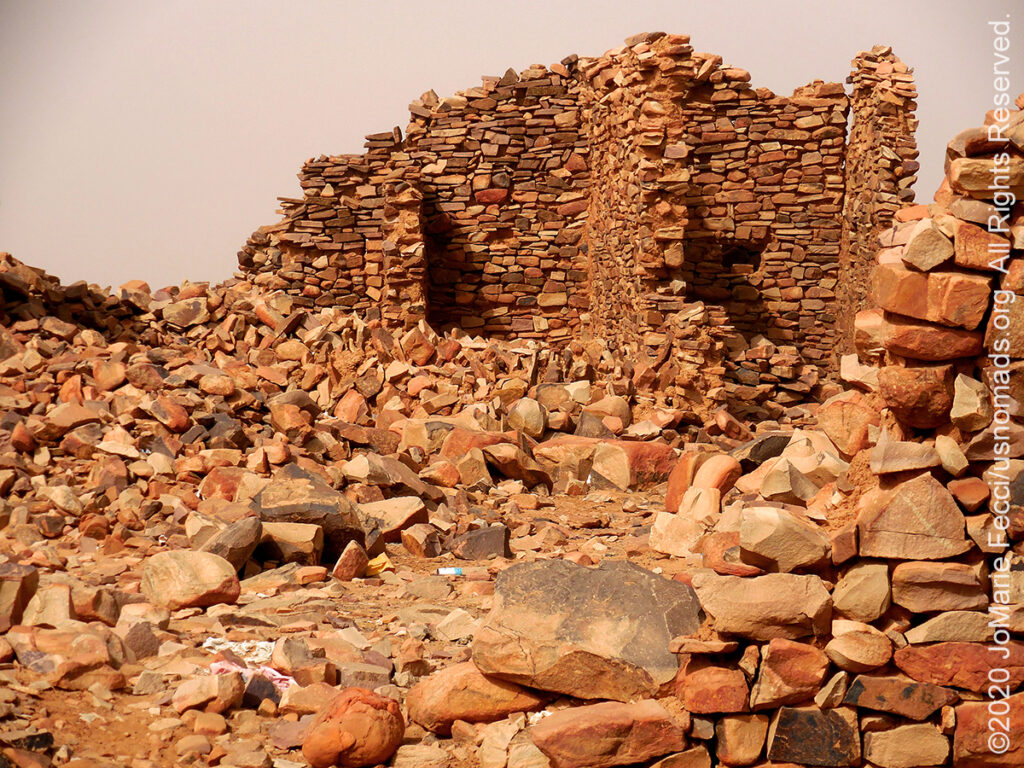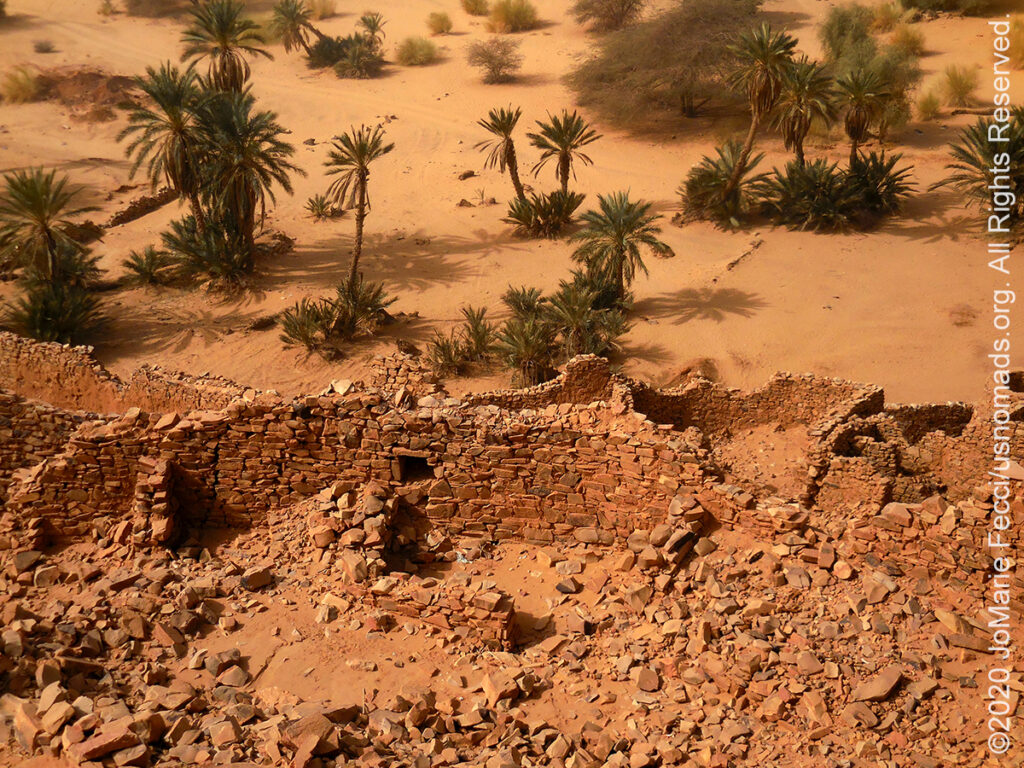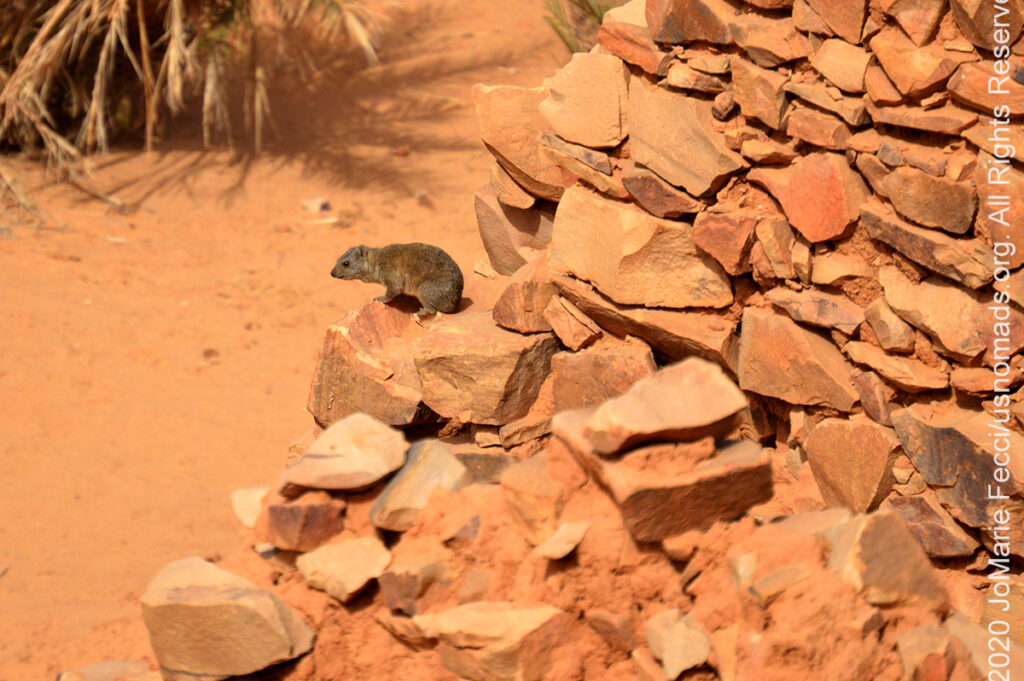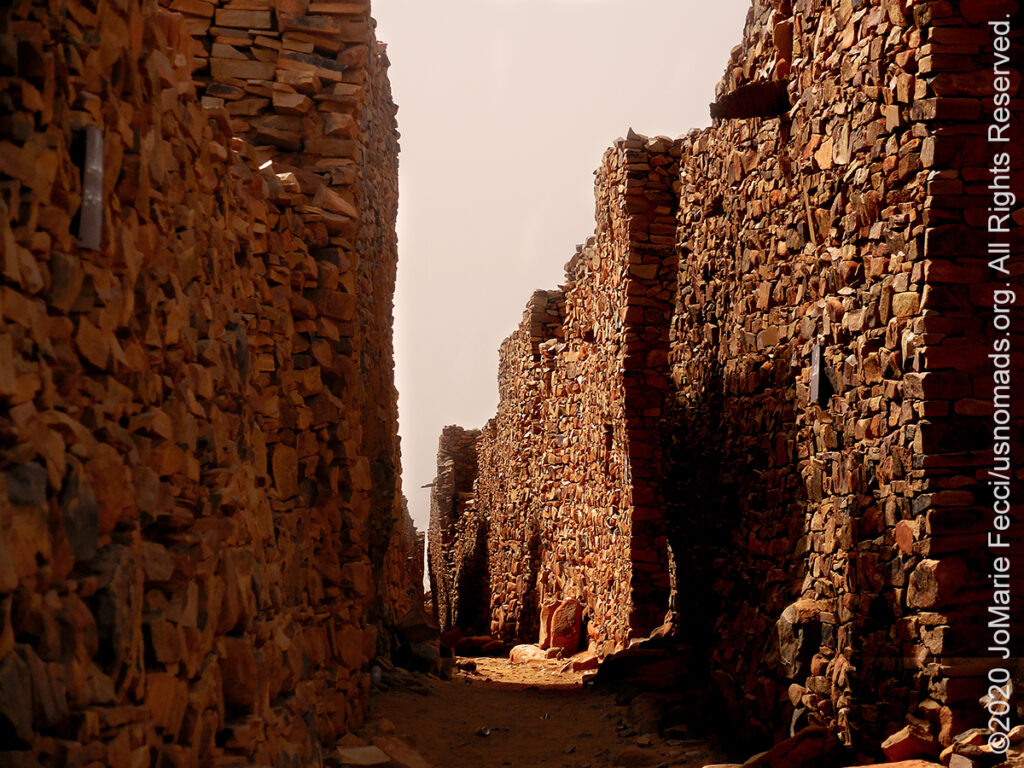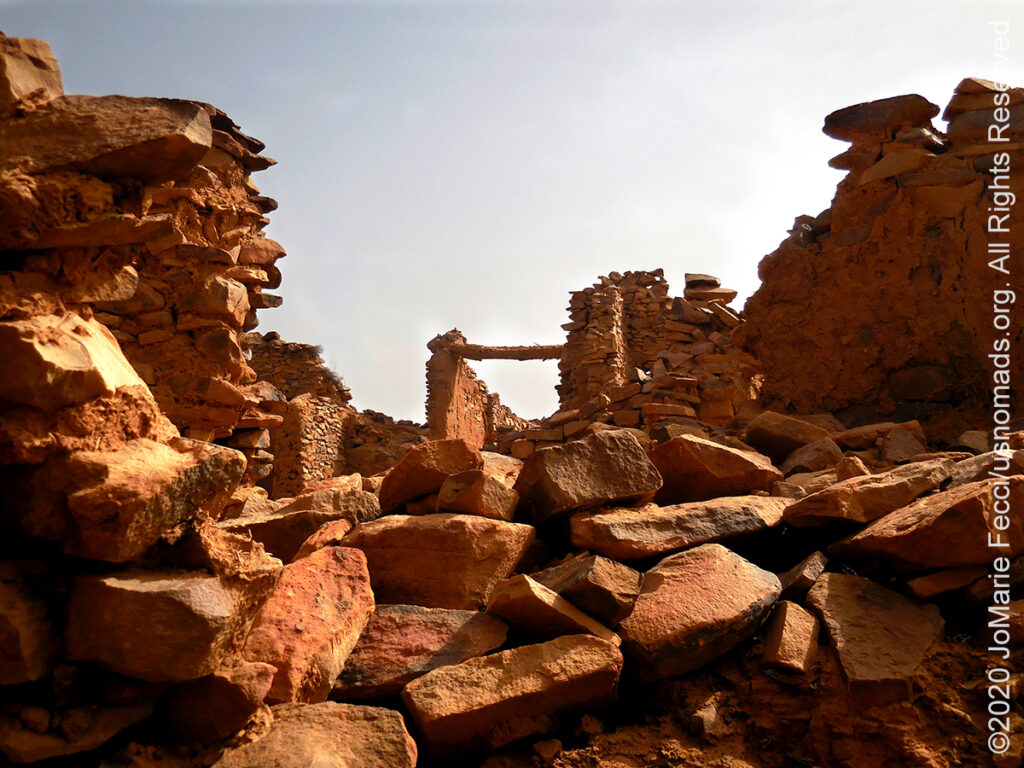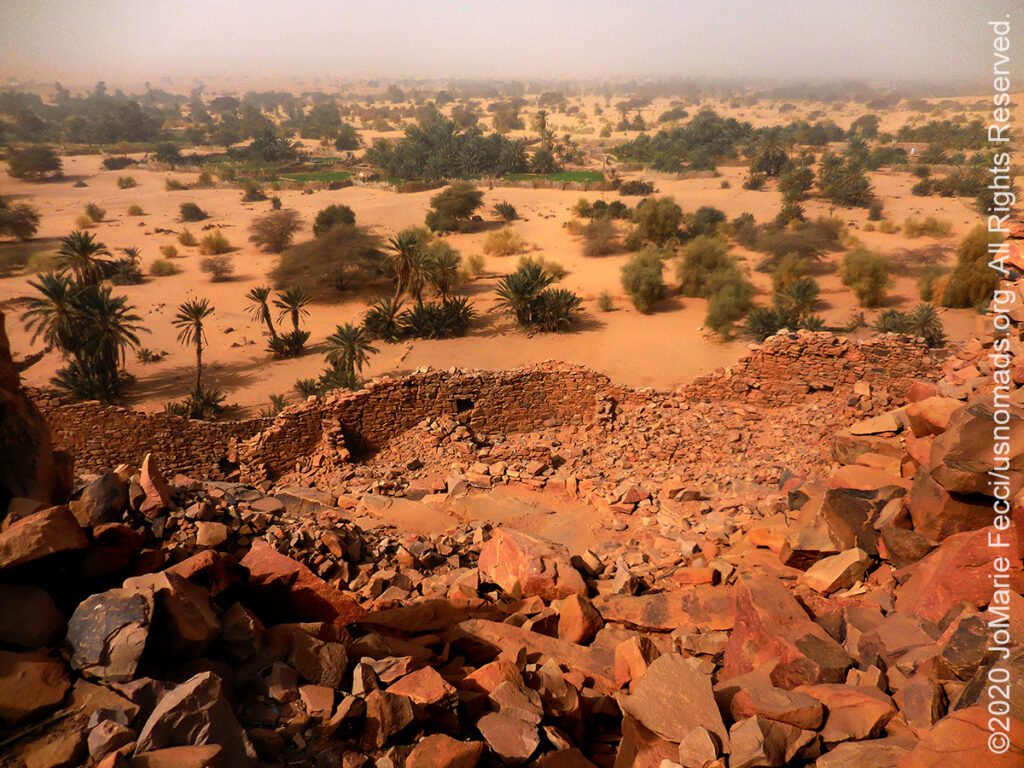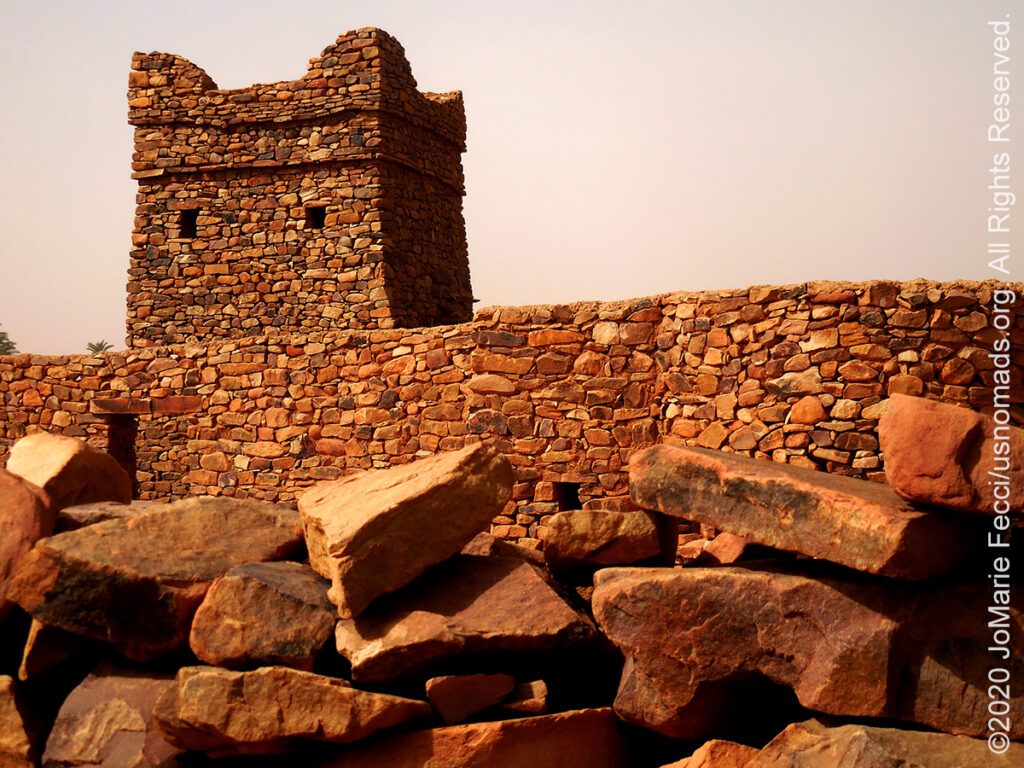On the horizon a massive stone city the color of earth through a haze of blowing sands seems to rise up out of the desert itself. As the distance between us closes I can see its towers crumbling into an otherworldy landscape of ruin. Ouadane, on the southern edge of the Adrar Plateau in Mauritania, had once been a staging post in the trans-Saharan trade and a stop for caravans transporting slabs of salt from the mines at Idjil. Now its remains are protected as a UNESCO World Heritage Site.
Part of the city is more or less intact, and another part has been restored, but there is still a large section that remains a massive pile of rubble. Ouadane was a typical Ksar, a walled city construction style common in the Sahara, and though the walls have fallen into ruin, I still must enter via a gate — a very modern chainlink style fence — opened by a kind caretaker who keeps a watchful eye over the lonely outpost, protecting this precious cultural resource from vandalism or looting.
Ouadane was founded in 1141 on the ruins of four cities, themselves created in 742. Details from the earliest history are uncertain but the town prospered from the trans-Saharan gold trade during the time of the Ghana Empire. In the middle of the 11th century, the Arabic geographer al-Bakri described a route that ran between Tamdoult near Akka in Morocco to Aoudaghost on the southern edge of the Sahara that passed this way. One of the first written references to the town by Gomes Eanes de Zurara described Ouadane as the most important town of the Adrar region and the only one with a surrounding wall. Fifty years later Valentim Fernandes wrote a detailed account of the trade in slabs of salt from the Idjil mines and the role of Ouadane as an entrepôt. Estimates in accounts from 1505-1508 put the population somewhere between 400 and 1,800 inhabitants.
Exploring the ruins is like delving into a mystery. Dark shadows alternately hide and reveal details as I pass through the old alleyways weaving between a hodgepodge of half crumbled houses and scattered stones. Bits of remarkably intact buildings cling desperately to the cliff face in defiance of time. The wind picks up some fine sand, swirling it into an ever rising column of dust that then disappears behind the rubble into thin air, seeming very much like a ghost or a spirit.

